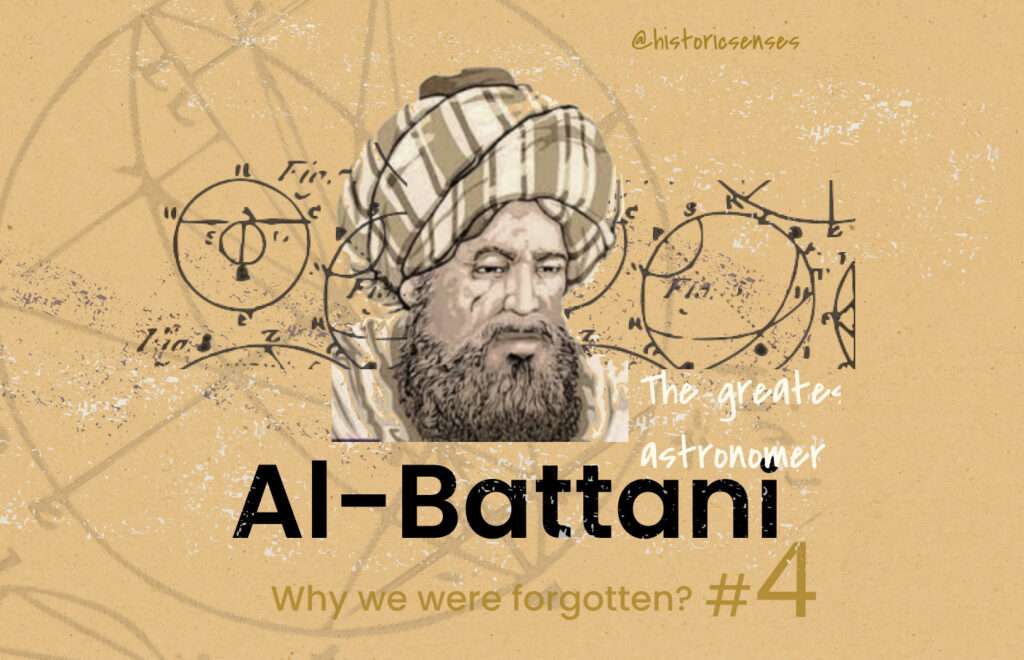
WELCOME to the “Why We Were Forgotten?” series, where I expose often forgotten scholars of Muslim civilization and their unforgettable works.
In this 4’th episode I reveal astronomer, astrologer, and mathematician, Al-Battani from 9th-century.
Many believe that after the Greeks, Nicolaus Copernicus brought astronomy back to life during the Renaissance.
But is this completely true?
Let’s go back in time to fill in the historical gap!
Meet Al-Battani, a 9th-century Syrian astronomer, astrologer, and mathematician, considered the greatest and most famous astronomer of the medieval Islamic world.
In the 9th century, he created star catalogs and planetary tables. The accuracy of his data later inspired Nicolaus Copernicus to explore the heliocentric nature of the cosmos.
Al-Battani’s planetary tables were used by German mathematician Christopher Clavius to reform the Julian calendar.
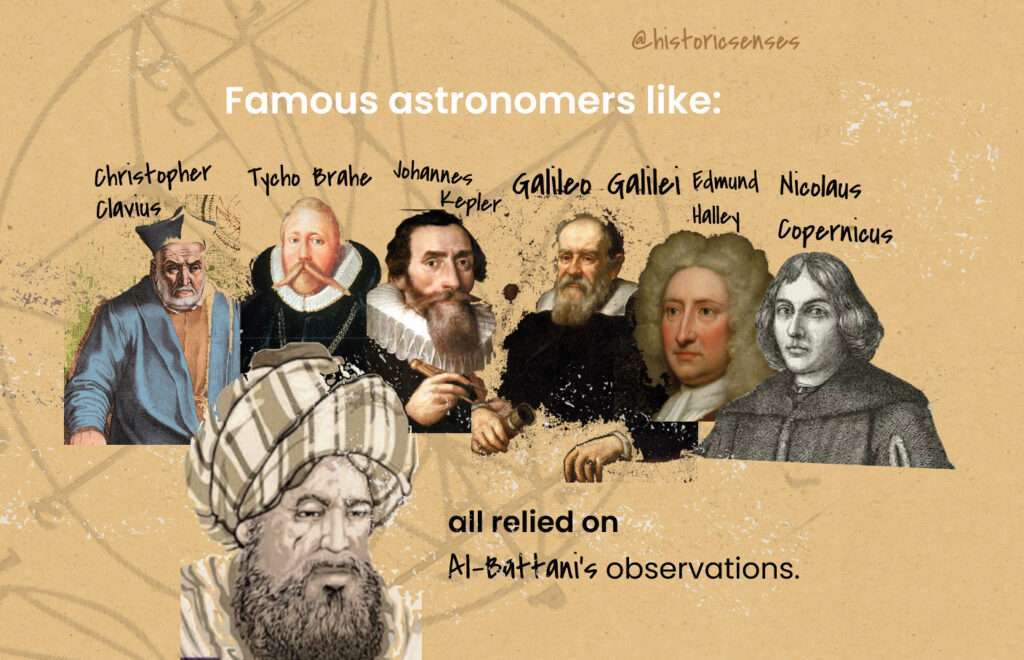
Famous astronomers like: Christopher Clavius, Tycho Brahe, Johannes Kepler, Galileo Galilei, Edmund Halley, and Nicolaus Copernicus all relied on Al-Battani’s observations.
So, what did he discover that inspired so many astronomers?
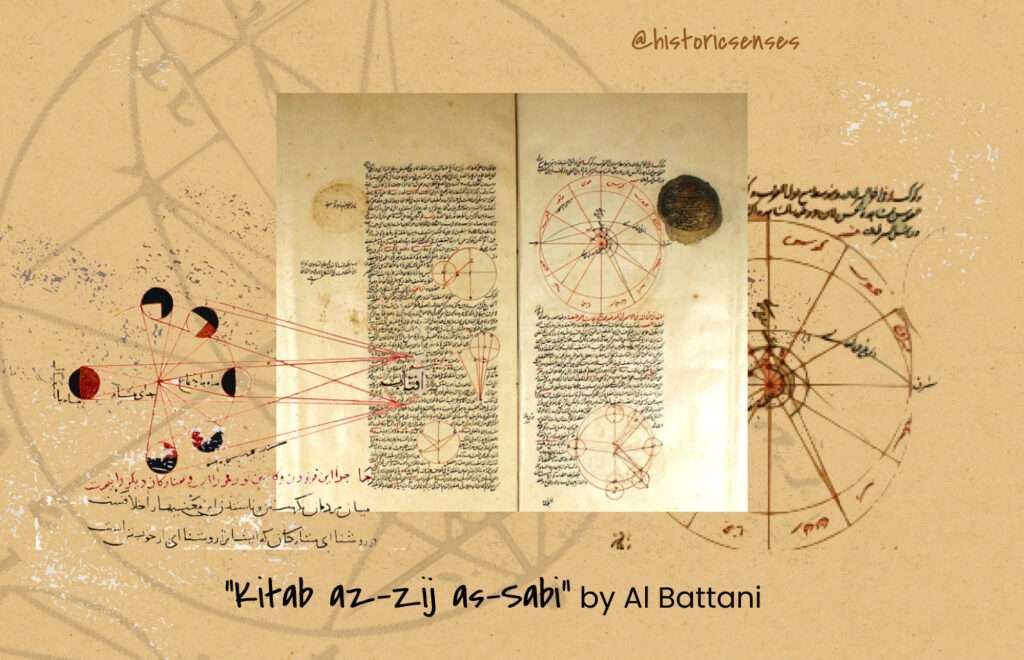
Al-Battani’s book “Kitāb az-Zīj aṣ-Ṣābi’” (Book of Astronomical Tables) corrected mistakes made by C. Ptolemy (Claudius Ptolemy was an Alexandrian mathematician and astronomer) and described precise astronomical instruments for accurately measuring time and the positions of stars and planets.

In this work, he described instruments such as horizontal and vertical sundials, the triquetrum, the mural instrument, and a quadrant instrument.
Horizontal Sundial – The plate lies flat on the ground, and the stick stands straight up.
Vertical Sundial – The plate stands up like a wall, and the stick pokes out from it. (The position of the shadow on the sundial’s shows the time of day.)
The Triquetrum – is an ancient tool used to measure the positions of stars and planets.
The Mural – instrument is an angle-measuring instrument mounted on or built into a wall.
The careful alignment of his astronomical instruments enabled him to achieve accurate observations of equinoxes and solstices that had previously been unknown.
Al-Battani improved Ptolemy’s measurement of the axial tilt, producing a value of 23°35′.
He also obtained a value for the solar year to be 365 days, 5 hours, 46 minutes, and 24 seconds.
He also became one of the first astronomers to understand solar eclipses and why such phenomena can occur. (A solar eclipse occurs when the Moon passes between Earth and the Sun.)
He was the first to realize the Sun’s path was changing through the zodiac stars, moving 1 degree every 66 years.
Some of his measurements were even more accurate than those taken by the Polish astronomer and mathematician Nicolaus Copernicus during the Renaissance.
One of Al-Battani’s greatest achievements was his use of sines and tangents in geometric calculations, particularly in spherical trigonometry.
Al-Battani’s methods were highly advanced for his time, showcasing his exceptional mathematical skills.
He recognized that trigonometry was more effective than the geometrical chords used before. This approach replaced the older methods used by C. Ptolemy.
He also understood the relationship between the sides and angles of a spherical triangle.
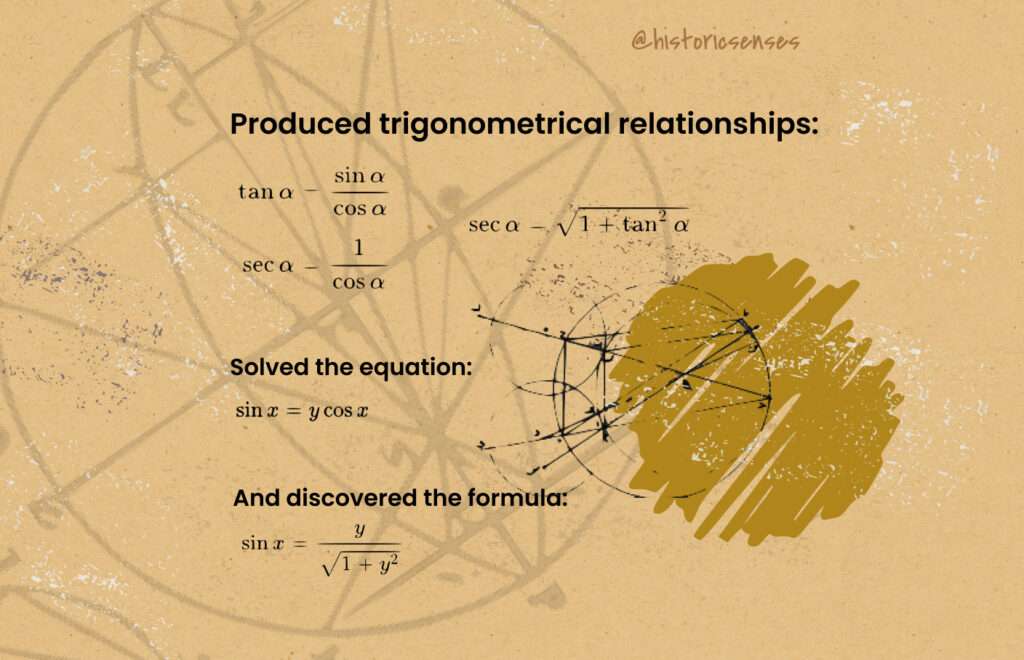
Al-Battani discovered the inverse functions of tangents, known as secant and cosecant.
He also created the first table of cosecants for each degree from 1° to 90°, which he called a “Table of Shadows” (because it referred to the shadows on a sundial).
Using these trigonometric relationships, Al-Battani developed an equation for Meccans to find the qibla, (the direction which Muslims need to face during their prayers).
So why was he forgotten?
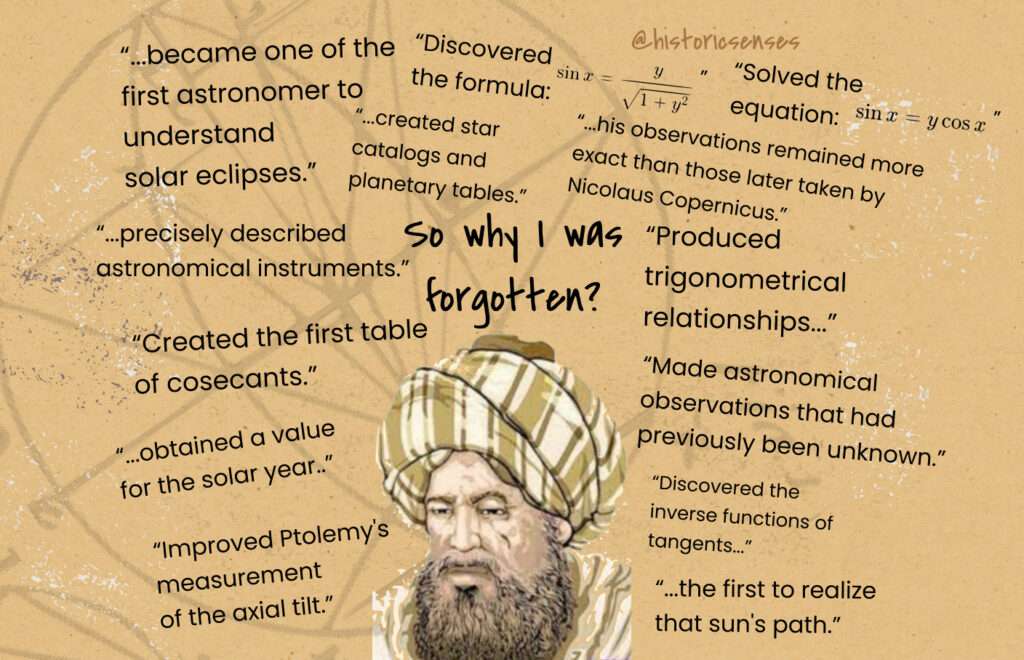
If the Western school system skips it, that doesn’t mean it’s not there.
If you found this information valuable, follow me on Instagram @historicsenses, where I post daily interesting facts about Muslim civilization.
